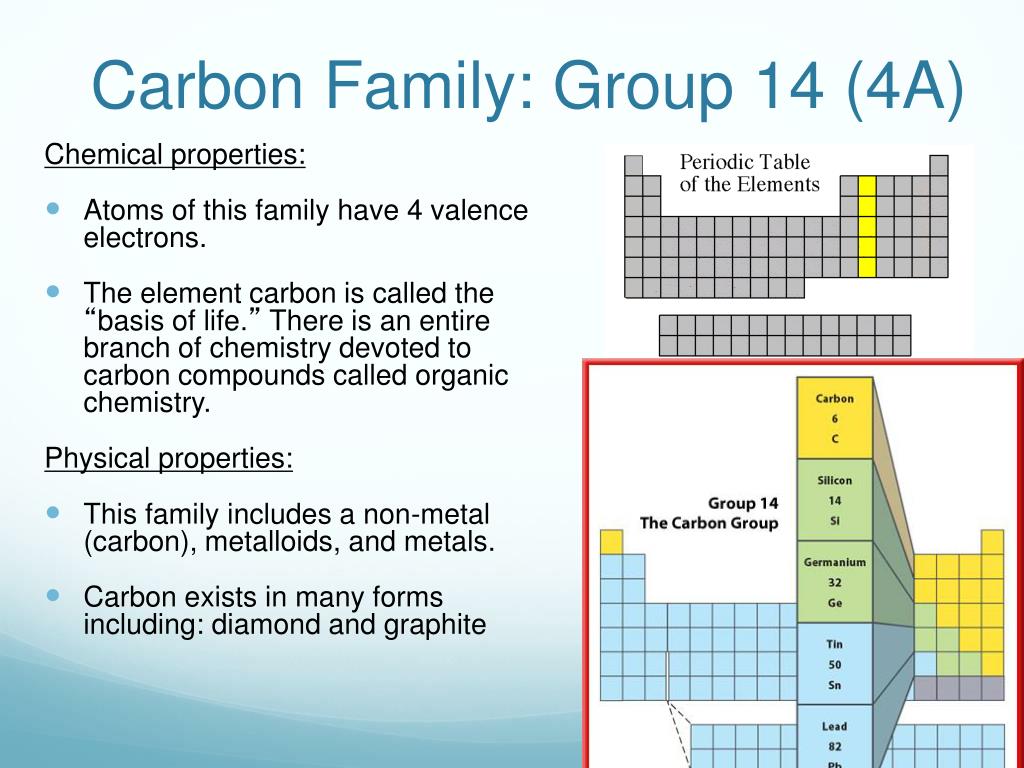
When an organism dies, it stops taking in carbon-14, so the ratio of carbon-14 to carbon-12 in its remains, such as fossilized bones, will decline as carbon-14 decays gradually to nitrogen-14 2 ^2 2 squared. Sources, facts, uses, scarcity (SRI), podcasts, alchemical symbols, videos and images. 20 The allotropes of carbon include graphite, one of the softest known substances, and diamond, the hardest naturally occurring substance. Element Carbon (C), Group 14, Atomic Number 6, p-block, Mass 12.011. Newer work indicates that the melting point of diamond (top-right curve) does not go above about 9000 K.

As animals eat the plants, or eat other animals that ate plants, the concentrations of carbon-14 in their bodies will also match the atmospheric concentration. Characteristics Theoretically predicted phase diagram of carbon, from 1989. As plants pull carbon dioxide from the air to make sugars, the relative amount of carbon-14 in their tissues will be equal to the concentration of carbon-14 in the atmosphere. These forms of carbon are found in the atmosphere in relatively constant proportions, with carbon-12 as the major form at about 99%, carbon-13 as a minor form at about 1%, and carbon-14 present only in tiny amounts 1 ^1 1 start superscript, 1, end superscript. Hayley Birch Interesting? Spread the word using the ’tools’ menu on the left.For example, carbon is normally present in the atmosphere in the form of gases like carbon dioxide, and it exists in three isotopic forms: carbon-12 and carbon-13, which are stable, and carbon-14, which is radioactive. Iupac is currently working on a new isotopic periodic table showing atomic weights as intervals, which it hopes will be the highlight of the International Year of Chemistry next year. ’This is going to force teachers all over the world to learn about a thing called a stable isotope,’ he says. Tyler Coplen, director of the US Geological Survey’s Stable Isotope Laboratory in Virginia, admits the change makes matters more complicated but thinks it’s ’fantastic’ for chemistry education. Those up for discussion at the next meeting of the commission, in 2011, include helium, copper and lead. The first ten elements for which atomic weights will be stated as intervals in the Table of Standard Atomic Weights are: hydrogen, lithium, boron, carbon, nitrogen, oxygen, silicon, sulfur, chlorine and thallium. ’The truth’, as Berglund puts it, can now be revealed: that atomic weights are not constants of nature. ’It would actually be very difficult to find a material with this exact atomic weight,’ he says. With the middling atomic number 30, it has five stable isotopes of atomic weight from the dominant zinc.

Represented in the periodic table as Zn, zinc is a transition metal, grouped with cadmium and mercury. This is approximately the sum of the number of protons and neutrons in the nucleus.

He points out that in its previous form, the standard atomic weight for an element like lithium was just an average value. The mass of an atom relative to that of carbon-12. So, after all this time, why the change? According to Michael Berglund, a member of Iupac’s Commission on Isotopic Abundances and Atomic Weights, which proposed the change, it is purely because more reliable and precise measurement data are now available. The idea that elements can be made up of more than one stable isotope goes back as far as the early 20th century and today these differences are exploited by labs all around the world in fields as diverse as food authentication and geology. So, for example, oxygen accounts for 65 of the mass of the body, while nitrogen is 3 and so on. This periodic table shows the percent composition of the average human body.

The values correspond to the element’s mass fraction in an average human body. It has been known for many years that the atomic weight of an element can vary depending on its number of stable isotopes and their relative abundances. Periodic table showing the elements in the human body. Extract from the proposed isotopic periodic table


 0 kommentar(er)
0 kommentar(er)
